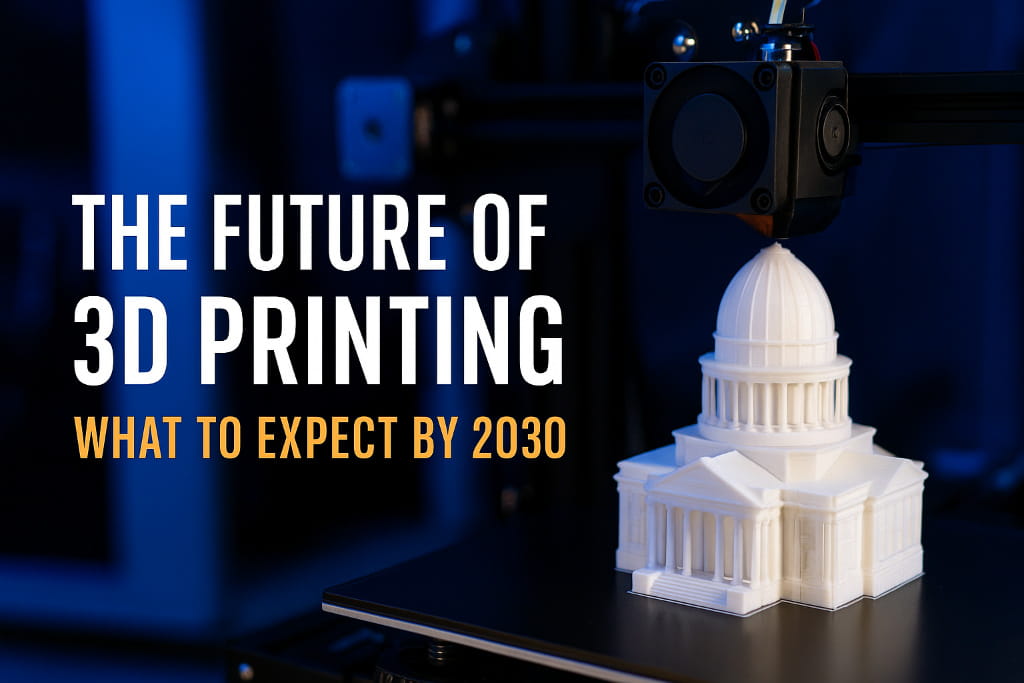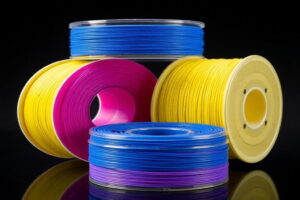
- +91 8055996347
- info@3dreality.in
- Chapru nagar square, CA road, Nagpur, Maharashtra-440008

3D printing has already transformed the way we design, create, and manufacture. From rapid prototyping in engineering to custom medical implants, this once-niche technology is now a global disruptor.
But what lies ahead? As we move toward 2030, 3D printing is expected to evolve beyond our wildest dreams. In this blog, we’ll explore how the next wave of advancements will reshape industries, spark innovation, and change lives—all with a little help from advanced filaments, smarter 3D models, and faster, greener machines.
Imagine a world where you can print your dinner, build a house in 24 hours, or create a functioning heart—all from digital files. That’s not sci-fi anymore; it’s the future of 3D printing.
1.Mainstream Manufacturing Will Go Local
By 2030, 3D printing will shift manufacturing from giant factories to localized production hubs. Companies will no longer need to ship thousands of identical products across the globe—instead, they’ll print customized parts and products on-demand, closer to the consumer.
This change will drastically reduce costs, eliminate waste, and revolutionize supply chains. For small businesses, prototyping will become faster, cheaper, and far more accessible.
2.Smart Filaments Will Take Over
Today’s filaments like PLA, ABS, and PETG are just the beginning. By 2030, we’ll see the rise of smart filaments—materials embedded with sensors, conductive properties, or bio-compatibility.
Want a 3D printed bandage that monitors your heartbeat? Or a chair that adjusts to your body temperature? The filaments of the future will make it happen. These innovations will open doors in healthcare, fashion, and aerospace like never before.

3.Medical Breakthroughs Will Be Life-Saving
3D printed prosthetics are already improving lives—but by 2030, we may be printing organs, tissues, and bones. Bioprinting, a cutting-edge branch of 3D printing, is expected to grow exponentially.
Researchers are developing 3D models of organs using stem cells and specialized bio-inks, aiming to eliminate transplant waiting lists. With AI and robotics, the medical field is set to create patient-specific solutions that are faster, safer, and more personalized.
4.Construction Will Be Transformed
3D printed buildings are already being tested—and by 2030, they might become the norm. Using large-scale printers and cement-based filaments, entire homes, schools, and even commercial buildings will be constructed in days instead of months.
This will be a game-changer in disaster relief zones and developing countries, providing affordable housing with speed and precision. The ability to print complex architectural 3D models will redefine what’s possible in design and urban planning.
5.Sustainable Printing Will Go Mainstream
One of the biggest promises of 3D printing in 2030 is sustainability. Traditional manufacturing creates a lot of waste, but 3D printing is inherently additive—it only uses the material needed.
Future printers will use recycled filaments, biodegradable plastics, and even organic materials. Think of printing with algae, mushrooms, or even food waste! These eco-conscious materials will reduce environmental impact while inspiring new artistic and industrial uses.
6.Every Home Might Have a 3D Printer
Just like microwaves or smartphones, 3D printers may become a household essential by 2030. From printing household items, toys, and tools to creating custom phone cases or fashion accessories, the possibilities are endless.
With user-friendly software and vast libraries of ready-to-use 3D models, even beginners will be able to design and print with ease. The age of DIY digital crafting will explode.
While the future is bright, there are hurdles too. Intellectual property issues, quality control, and material limitations will need solutions. But with rapid advancements in AI, cloud computing, and prototyping methods, these challenges are being tackled one layer at a time.
The future of 3D printing isn’t just about machines—it’s about empowerment. It puts creative power into the hands of individuals, helps solve global problems, and drives industries into new territories.
By 2030, 3D printing will not just be a tool; it will be a necessity—a part of our everyday life, industries, and innovation.
So whether you’re a tech enthusiast, designer, educator, or entrepreneur, now’s the time to start exploring this incredible world. Because the future of 3D printing isn’t just coming—it’s already being built, one layer at a time.
Need help bringing your 3D printing ideas to life or building a custom solution? Connect with the experts at 3DReality.in — we’re here to design and deliver what’s best for your business!